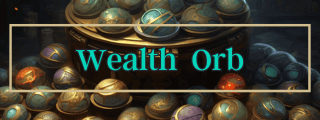At the time of writing in May 2023, there’s no excuse to have money parked in a savings account that’s yielding less than 4%. With the Federal Reserve raising rates to their highest level since 2007, we as consumers can command a higher premium from whom we choose to bank with. It’s time to upgrade to a HYSA!
Tons of people are still banking with bad banks that charge countless banking fees, and offer abysmal interest rates, and for what? Because they’re too lazy to spend a few hours changing to a good bank? Or maybe because of an excuse like: “My family has been banking with them for years. I couldn’t possibly leave now.”
Why earn 0.25% APY on your savings when you can earn between 4-5% with a High Yield Savings Account (HYSA)?
Many digital-first banks offer HYSAs since they have lower overhead, few or no physical banking locations, and less localized services that cost customers money and eat into banking profits. Because of this, these digital-first banks can offer higher yields for their customers while still remaining profitable.
The reality is that 4-5% APY on a savings balance isn’t going to significantly change your financial picture in the short term. But it will provide some additional protection from inflation, market volatility, and offer some upside in the face of economic uncertainty. And like all incremental improvements that are scalable and sustainable, will compound over time.
Does an HYSA matter or make a difference?
Consider two bank accounts with $25,000. One is with a bad bank and earns 0.25% interest and the other is an HYSA (at a great bank) that earns 4% interest. With no additional deposits, how much do you think the two accounts are worth after 25 years?
$26,610.29 VS $66,645.91.
Staggering isn’t it?
Assuming we get back to an around 2% inflation rate, one account has deteriorated and lost real buying power while the other is thriving and has generated significant gains even when factoring for inflation. Now, it’s difficult to predict where rates will land over the long term, and you should expect great fluctuations. Don’t expect the rates of today to be the rates of tomorrow.
Your HYSA can work hard to help you grow your savings or generate some extra income for investing or to tackle your other financial goals. It’s a source of optimization potential once you have the personal finance fundamental of building a rainy day fund accomplished.
The 80-20 solution is to make sure you have enough cash savings in place for a rainy day. Maybe you’re just starting out and that’s a month of expenses. Maybe it’s 3-6 months of expenses or even a year. With that said, I advocate for ditching a bad bank as soon as possible, even if you haven’t met your rainy day savings goal yet. It’s a quick win that can lead to meaningful impact given enough time to compound.
💡 If you were a home builder, would you try to build an amazing house on the ground without pouring a great foundation first? Of course not! Think of an HYSA as your foundation for Savings.
Making the move to an HYSA and great bank sooner rather than later sets you up for success as you work to improve your finances.
One less thing to optimize later down the line.
Even better, treat the time you invest in improving your banking situation as the creation of a new or improved passive income stream, because in reality that’s exactly what it is. You’re pulling a lever and creating extra income that wouldn’t otherwise exist from an asset you control.
Build a great foundation, then build the rest of the house.
Some things to avoid like the plague when shopping for bank accounts
Account minimums (unless they get you a really great rate), overdraft protection fees, checking account fees (even if they’re waived for a balance threshold), inactivity fees, account maintenance fees, check fees, no ATM fee reimbursement, and card ordering/replacement card fees. If I’m looking at a HYSA that has anything on this list, chances are I’m not doing business with them.

Just say NO to fees.
The value of cash savings in a rainy day fund is not its income-producing potential, but the shelter and protection it provides in the face of uncertainty. Any yield or income from that fund that can beat the current rate of inflation (or at least slow the rate your buying power atrophies) is just icing on top of the cake.
Even then, it probably doesn’t make sense to open up multiple banking accounts and to fling all your cash around more than once a year to chase an extremely marginal boost in APY by account hopping, even when factoring in some promotional new customer bonuses.
Consider the impact and time cost of switching
Do I really want to update my auto pay on my credit cards, my funding source for my investment accounts, my direct deposit at work, and make sure to reroute any and all obscure recurring ACH payments like utilities on my home to a new account for an extra 0.1% APY?
The time commitment and potential annoyance of something going wrong is simply too great for the return offered. Using an example of $50,000 in cash savings, an extra 0.1% APY increase only puts an extra $50 in my pocket for the year. I can almost guarantee it will take over an hour to update everything needed to change my primary banking relationship.
Changing account details is only part of the process. You need to ensure your big payments and expenses (like a mortgage, rent, car payment (if you have one), etc.) won’t post to your new account before your funds have fully transferred and settled. There’s an art to the timing of bills & payments for the first month of dating a new bank.
Add to that the fact that last time I changed banks, I missed updating an obscure quarterly ACH payment I had automated and was left with an annoying overdraft charge in the old account I had yet to fully close.
The two hours I invested in ditching my local credit union offering abysmal APY on Savings quickly turned into three hours after I had to call customer service at my old bank and convince them to remove the overdraft charge on my account.
The old bank wasn’t eager to do me any favors, especially since I had transferred my entire account balance to another banking institution. I could have just eaten the $35 dollar overdraft fee but I really don’t like bank fees.
Interest rates change all the time, so be sure to consider the time investment and opportunity cost of rate chasing and hopping banks every time there’s a shiny new HYSA on the block. For me personally, with my level of savings, I would not consider changing banks for less than a 0.5% total increase in APY. It’s simply too much of an annoyance, and I am happy with my banking services from SoFi.
SoFi has continually raised APY on their savings account alongside changes to the Fed Funds Rate and ranks close to the top on the list of HYSAs reviewed by popular finance sites.
If you’re only earning 2% on your savings right now and for simplicity’s purpose have $100,000 in the account, that’s $2,000 of extra income per year. By switching to an account yielding 4%, that will double to $4,000. $2,000 extra for a few hours of work is well worth it in my opinion.
Another helpful tip is to check out sites like NerdWallet that regularly review and update their reviews on popular banks. Companies pay for NerdWallet to review their financial products, but the reviews are honest opinions by the contributors and can’t be influenced by the sponsoring company.
You want to ensure that any bank you choose meets your financial needs and has good customer service.
I would never choose a bank with a marginally higher APY if their customer service and the rest of their services didn’t match up. Or if it’s fees galore and it’s hard to tell how much it will cost to bank with them.
Find a good bank and stay with them until you have a compelling reason to do otherwise.
A quick HYSA checklist (choosing a great bank)
Things to Look for when shopping for a bank account:
- ✔️ FDIC Insured (non-negotiable given the 2023 collapse of multiple banks.) Make sure you’re covered at least up to your account balance. In the rarer case that it’s needed–it’s possible to get over the standard $250k balance insurance by having a joint account or if your bank offers a FDIC cash sweep program with other partnering banks.
- ✔️ Great customer service.
- ✔️ High APY yield and a history of remaining competitive in the market.
- ✔️ Good customer reviews and/or financial reviews on sites like NerdWallet.
- ✔️ Great features and perks.
- ✔️ Easy (and instant) to transfer money between checking and savings accounts at the same bank.
Things to avoid when shopping for a bank account:
- ✖️ Fees, minimums, thresholds, and anything that makes it difficult to understand what it costs to bank or nickel and dimes you along the way. It shouldn’t suck to interact with YOUR money in YOUR bank account. Just say NO to bank fees.
- ✖️ Bad customer service.
- ✖️ Lack of features that are important to your personal finances.
- ✖️ Banks with a long history of being fined for bad or predatory business practices. You can see the top offenders here.
- ✖️ HYSAs that offer high interest on an initial balance but then shift to a below-market rate for any money after that. Don’t limit your future self.
What about CDs as part of my savings strategy?
With current rates, certificates of deposit (CDs) are attractive. But they also require you to lock in funds for a term window. At the time of writing, it’s easily possible to earn 5+% of risk-free return on a CD. I hold about a third of my emergency rainy day fund in a CD ladder, ranging from 3-12 months.
At the end of the day, personal finance is personal. Decide what makes the most sense for you and your family and figure out if it makes sense to augment your cash savings strategy with CDs or other short-term fixed-income investments like treasuries.
🟢 Orbs of Wisdom
- With the Fed Funds Rate so high at the time of writing, there’s no reason not to earn good interest on your savings. Ditch bad banking and upgrade to an HYSA.
- Ditch your bad bank and find a great one, and just say no to bank fees. Prioritize building a rainy day fund for you and your family before chasing marginally higher yields across different banking accounts by hopping regularly.
- Don’t spend a lot of time yield-chasing and hopping banks for an extra 0.1% yield. Instead, choose a bank that has a history of maintaining a competitive rate in the market and use your valuable time optimizing things elsewhere.
- Consider using CDs and/or short-term fixed-income treasuries to augment your cash savings strategy if you desire more income and if you don’t need or value the extra liquidity of pure cash. Consider creating a simple CD or Treasury ladder that will free up increments of your capital on a recurring basis for a balance between income and flexibility.
Ready to ditch your bad bank for a great one? I recommend SoFi. Help support the blog and upgrade your finances with an account at SoFi.








Comments